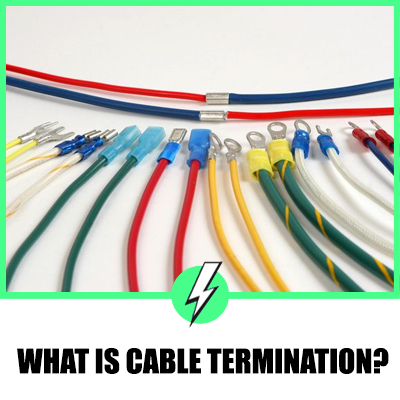Maximising Safety & Capacity for Conductors in 3/4 Conduit
Facing the challenge of fitting the right number of current-carrying conductors into a 3/4 conduit?
It’s a crucial aspect of electrical installations that demands precision and understanding. Fear not, for this guide is tailored to demystify the complexities of conduit fill, ensuring your projects not only meet legal standards but also excel in efficiency and safety.
Whether you’re a professional electrician or a hands-on DIY enthusiast, mastering this element is a game-changer for your electrical work.
Well, we’ll be going over:
- Why is it essential to understand the role of current-carrying conductors in your electrical installations?
- What does conduit fill mean, and why is its correct calculation significant for your projects?
- Which factors should you consider to determine the appropriate number of conductors in a 3/4 conduit?
Let’s dive in.

Contents
Importance of Current-Carrying Conductors in Electrical Installations
When designing or updating electrical installations, understanding the importance of current-carrying conductors can’t be overstated.
These conductors are the lifelines of any electrical system, responsible for transmitting power efficiently and safely from the source to the appliances or units that need it.
The effectiveness of your electrical installation heavily relies on the capacity and integrity of these conductors.
Safety is paramount. Overloading a conduit with too many conductors not only violates regulations but can lead to overheating, which poses a significant fire risk. Ensuring you abide by legal standards keeps your installation safe and compliant.
Moreover, efficiency is key. An optimally filled conduit allows for the effective dissipation of heat and reduces the risk of energy loss. It’s crucial for maintaining the longevity and reliability of your electrical system.
Understanding the specific capacities, like how many current-carrying conductors fit in a 3/4 conduit, is vital.
This knowledge ensures your installations are both safe and efficient, laying the groundwork for electrical systems that meet both current and future needs.
Understanding Conduit Fill and Its Significance
When you’re dealing with the complexities of electrical installations, appreciating the nuances of conduit fill becomes paramount.
Essentially, conduit fill refers to the amount of space inside a conduit that is occupied by the cables. Specific guidelines ensure that these fill percentages do not exceed safe limits, optimising both performance and safety.
- Overfilling leads to heat buildup, which can degrade insulation and increase the risk of fire.
- Underfilling, while less common, results in wasted space and materials.
Recognising the appropriate balance in a 3/4 conduit is crucial. This knowledge not only ensures compliance with National Electrical Code (NEC) standards but also enhances the efficiency and durability of your electrical systems.
By adhering to these standards, you’re guaranteeing that your installation is safe, efficient, and prepared to meet the demands of both current and future electrical loads.
Factors Affecting the Number of Conductors in a 3/4 Conduit
When planning the installation of current carrying conductors in a 3/4 conduit, it’s vital to consider several factors that directly influence how many wires you can safely and efficiently run through it.
These factors ensure compliance with regulations, optimal performance, and safety of your electrical systems.
Conductor Size plays a pivotal role. Larger conductors take up more space, reducing the number of wires that can fit within the conduit. It’s essential to choose the appropriate wire gauge for your specific electrical load requirements.
Type of Conduit Material also impacts capacity. Different materials such as PVC, aluminium, or steel may have varying thicknesses and internal surface textures, affecting the amount of space available for wires.
Ambient Temperature surrounding the conduit installation can influence the conductor rating. Higher temperatures can reduce the current-carrying capacity, thus possibly reducing the number of conductors to avoid overheating.
Bear in mind the Installation Conditions. Conditions such as whether the conduit is exposed to sunlight, buried, or in an air-conditioned environment can affect the choice and number of conductors.
By carefully considering these factors, you’re ensuring that your installation adheres to safety standards while meeting your electrical distribution needs efficiently.
Calculating Conduit Fill for Different Types of Cables
When determining how many current-carrying conductors fit in a 3/4 conduit, it’s crucial to understand the concept of conduit fill.
The conduit fill, or the maximum number of cables that can be safely installed in a conduit without overheating, depends on the type of cable and the conduit material.
Each type of cable, be it THHN, XHHW, or NM-B, has a different outer diameter, which impacts the fill capacity.
To calculate the conduit fill, you’ll first need to refer to the National Electrical Code (NEC) which provides fill tables. These tables offer guidance on the percentage of the conduit that can be filled, varying by conduit size and type.
However, for a practical approach, online calculators can simplify this task. By entering the type of conductor, conduit size, and number of conductors, you’ll receive an immediate assessment of your conduit fill percentage.
Remember, the key is to maintain the balance between maximizing conduit use and ensuring the installation adheres to safety standards, thus avoiding overheating risks.
Making accurate calculations early in the planning process can save you significant time and resources, ensuring your project’s compliance and efficiency.
Best Practices for Efficient and Safe Conduit Fill
When managing the capacity of current-carrying conductors in a 3/4 conduit, it’s paramount to adhere to best practices to ensure safety and efficiency.
Firstly, always consult the National Electrical Code (NEC) fill tables. These provide the backbone for understanding capacity limits and are essential in upholding safety standards.
It’s not just about following the rules, though. Thinking ahead about future expansion can save you from unnecessary headaches.
Installing a conduit with a little extra capacity might seem unnecessary now, but it’s a forward-thinking approach that accommodates potential upgrades or additional wires.
Measurement accuracy plays a critical role as well. Incorrect measurements can lead to overfilled conduits, posing overheating risks.
It’s safer to err on the side of caution by measuring each conductor’s outer diameter accurately and calculating the total fill.
Online calculators can be a boon, simplifying the calculation process. However, remember these are tools to aid, not replace, thorough manual checks and adherence to NEC recommendations.
Conclusion
Navigating the complexities of installing current-carrying conductors in a 3/4 conduit requires a blend of careful planning and adherence to safety standards.
By leveraging the guidance provided by the NEC and utilising tools like online calculators, you’re equipped to make informed decisions that ensure your electrical installations are both safe and efficient.
Remember, allowing for future expansion by choosing conduits with additional capacity can save you time and resources down the line.
Armed with these insights, you’re ready to tackle your next project with confidence, knowing you’ve taken the necessary steps to mitigate risks and optimise your electrical system’s performance.





